By far the nicest way to discover Berlin (except in the grey and windy mess which the locals refer to as “winter”) is by bike. When I biked one day along the small river Panke in Berlin’s north, I passed Luisenbad, a former spa, which gave the surrounding district it’s name: “Gesundbrunnen”. The spa hosts now a public library (the healthy spring was destroyed during the construction of the sewer system in 1891, another proof that building seems to be harder here than in the rest of our country) and in front of it you’ll find on Sundays a small and nice flea market. Unlike the bigger markets in Berlin, most sellers are still private merchants. I was happy to discover it, because I currently “needed” an easy to use camera for my second child. His elder brother already had an Olympus XA-2 (which when I bought it for him still was a cheap camera) so he deserved one too. I was happy to find not only one, but two fitting cameras for him: an Agfaphoto Compact FF for 2€ (battery included, will be the next post) and a Konica C35 EF for 10€ (covered in this post you’re about to read if I finally come to the point). As in most previous cases, I did not know anything about the Konica C35 EF before, but as it was light, cheap and had a built-in flash, I thought it would be the perfect kids’ camera. It did not come with batteries, but coincidentally I had a pack of LR44 in my backpack. Under the surprised looks (who brings batteries to a flea market?) of the seller, I quickly checked if the light meter was working and, although the rewind crank was missing, I bought it. I then immediately started to shoot the first roll (was in my backpack, another pure coincidence) on my way alongside the Panke and to the Tegeler Fließ.
I did not expect much from the camera at all. But I was wrong: although I used the wrong batteries, the result were impressive. Lighting was perfect (for my standards) and the sharpness of the just pictures just great. I later (=now) learned that the Konica C35 EF was (reportedly) one of Andy Warhols favorite cameras. I really wonder what his opinion on the five (!) different typefaces on the camera’s front must have been.
Introduction to the Konica C35 EF (second model)
Manufactured by Konica, Japan’s oldest photographic company, which sadly stopped producing cameras in 2006, the Konica C35 EF was the first automatic compact camera for 35 mm film with build in electronic flash. There were two models, the first was produced from 1975 and had a black release button for the flash. In 1977 the improved second model with an orange flash button, but more important, a self-timer and an added faster speed of 1/250 to the 1/60 and 1/125 of the first model was released.
The camera is equipped with an CDs light meter with the eye
above the lens, so it automatically compensates filters, just like on the Olympus 35 RC. Speaking of filters, the cameras has a 46 mm filter thread. It has neither a hot shoe nor a pc flash sync, as it comes with a built-in flash, thus the name. In Japanese the camera is nicknamed “Pikkari”
(which nearly every post about it tells, but sadly no one translates). The lens has a focal length of 38 mm with an aperture from ƒ 2.8 to 22. All of this you will see at the first glance. What might take some time (or at least some basic ancient Greek) to discover, is that the lens consists of six elements. This is rather unusual for a normal point and shoot camera of any era. The camera needs two AA batteries to operate the flash and one (now non-existent) PX-675 1.35 V battery for the light meter. I bought the camera with a missing rewind crank, but I could replace it with a slightly bended left over crank from a broken Olympus PEN EE-2.
Photographing with the Konica C35 EF
Insert two AA batteries for the flash and one A675 zinc-air battery or a SR-44 / LR-44 (as I did). Open the camera’s back with the small slider. Insert the film, due to the design of the body, the rewind crank has not to be lifted up. And you should not try it, as I assume that what happened to mine. Put the film in the easy loading take up spool, advance and close the back. Now set the correct ISO (25 – 400) with the rugged ring around the lens and you are set. To focus, guess the distance or use the face/upper body/full person/mountain symbols. You can do this with the camera in front of your eye, as the chosen distance and the measured aperture are both displayed in the viewfinder.
As this is another full automatic camera, the shutter speed 1/250 or 1/125 and aperture are set automatically by the camera. In backlight or other tricky light situation, you can point the camera to a normal lighted point and lock the exposure by half pressing the shutter button.
If the light is to dim, the camera asks you politely by moving the light meter needle in the red “please use my build in electronic flash after I was named” area
to finally use the build in electronic flash it was build for and named after. To finally do so, use the orange button (depending on your model). The flash unit will pop up and a bright light on the top will signal when the flash is ready to operate. This light is also mirrored/directed next to the eye piece, just enough bright to be noticed, but dim enough to avoid distraction.
To use the self timer place the camera on a tripod, advance the film and push the self timer lever down. The camera will take a photo after approx. 10 seconds.
When you finished your roll, push the rewind release button on the bottom and rewind the film.
The Konica C35 EF looks like just any other ordinary point and shoot from the 70ies with a design far from being nice or even elegant. But the ergonomics are surprisingly good, the lens is really sharp and the flash will be with you. Always. I believe a quote from a Film released in my cameras production year 1977 sums it up perfectly:
She may not look like much, but she’s got it where it counts, kid.
As currently the prices for compact auto-focus camera are skyrocketing and even the once cheap zone focus point and shoot cameras like the Olympus Trip 35 or the Olympus XA-2 start to follow that path, the Konica 35C EF is a (still) price worthy alternative with just enough art crowd
history if you like that in your camera. I do.
| Brand | Konica |
|---|---|
| Camera | C35 EF |
| Year built | from 1977 (first model 1975) |
| Serial number | 408107 |
| Lens | Konica Hexanon 38mm f 2.8 – 22 |
| Shutter | Two blade Leaf shutter |
| Film format | 35mm |
| Special features | First 35mm camera with build in flash |
| Accessories | – |
| Manufactured by | Konishiroku Sashin Kogyo K.K. Tokyo |
| Date of purchase | July 2019 |
| Price | 10 € |
| Place of purchase | Flea market Pankeufer |
Tips & Tricks using the Konica C35 EF
- The camera needs batteries to operate. I currently shoot with LR44 and unlike others had no problems yet. But I never shoot slide film, so your results may vary. As sadly the SR44 / LR44 battery adapter I use in my Olympus 35 RC is too wide for this camera, I will give zinc – aid hearing batteries a try.
- The camera’s light meter can not be switched off, so use a lens cover or store it lying on the lens. If you choose the zinc air solution, you don’t have to worry about this, as the only last 6 months anyway. I got a fitting lens cover from the nice guys from Safelight Berlin for free,
- The usual “press the rewind button and advance” trick for double exposure does NOT work with this camera.
Film purchase & processing:
Due to the automatic exposure, without any chance to override, you are limited to 35 mm films from 25 to 400 ISO.
Useful Links:
https://usermanual.wiki/Konica/KonicaC35EfInstructionManual788175.365580637/view (Manual)
https://www.lomography.com/magazine/220962-s-werelds-eerste-compactcamera-met-flits-konica-c35-ef (Review on lomography)
https://quirkyguywithacamera.blogspot.com/2016/11/surprisingly-solid-substitute-konica.html?m=1 (Review)
https://cameragocamera.com/2016/05/06/konica-c35-ef/ (Review)
https://wemakethings.net/2014/02/04/konica-c35-modern-batteries/ (How to modify the Konica C35 to use normal batteries)
https://www.flickr.com/groups/326650@N25/discuss/72157627639680959/ (Battery discussion in the Konica C35 Flickr group)
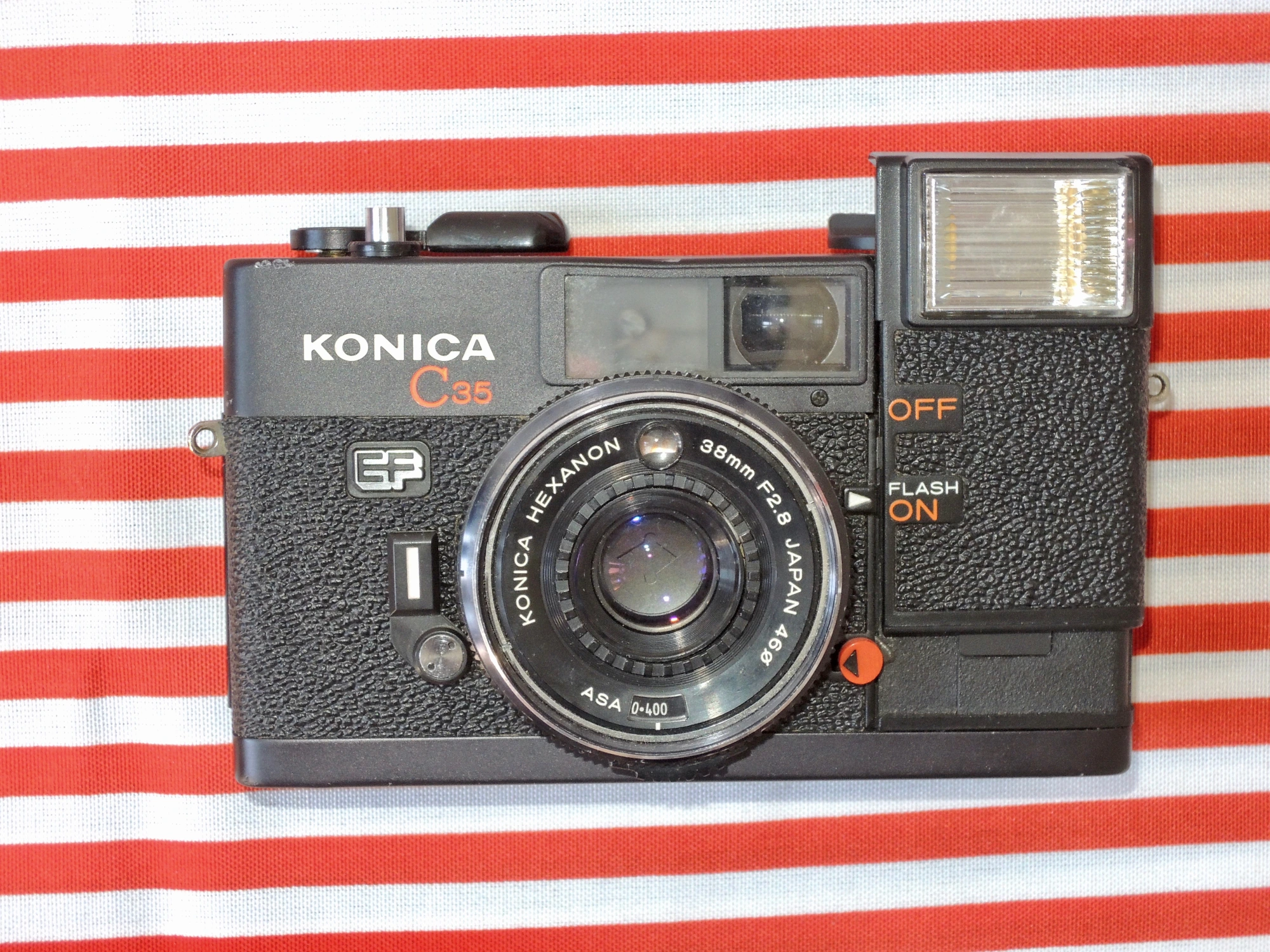



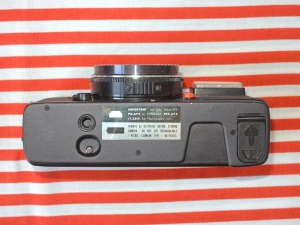




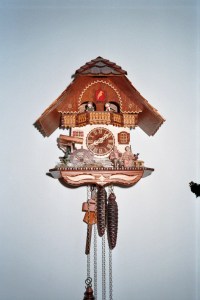
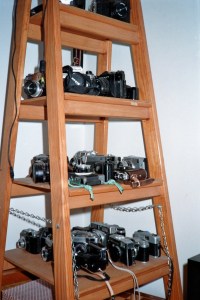



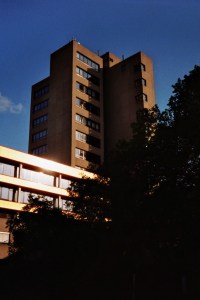



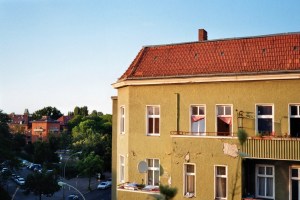

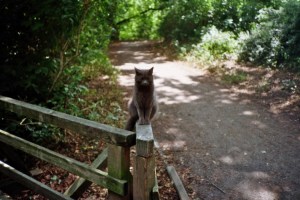
How did you find a rewind crank?
I still had one left from a broken Olympus Pen EE-2 which after some bending I could use. It does not fit perfectly, but it works.
Did you try the Zinc – Air battery with the camera? (MRB675 battery)
No, normal LR 44 did the job just fine. As I read somewhere, the camera is (unlike my Olympus) not so sensitive. And I only shoot negative film anyway
You replied to this comment.
Hi Agostina, the light meter of the Konica C35 EF does not work without a battery, as the two AA batteries only power the flash. As the original PX 675 does not exist any more, I use a modern LR 44 or SR 44 battery, and my pictures are well exposed.
Sadly, I don’t own a Konica C35, but as the light meter system seems similar, I would try a LR 44 / SR 44 or a fitting hearing aid battery. For the flash: Looks like the C35 has a standard hot shoe, so any normal flash should work.
Hi!
This was very helpful, I have retired the EF for the time being, LR44 alone does not seem to help the EF.
On the c35 E&L I recently purchased, the LR44 works! I have read some forums saying I need to set iso lower than film or photos will be too dark.
I read above you have not had any issues regarding this, is that right?
Was confused by the comment immediately after noting that you need an adapter/or use another battery, When and why would you need an adapter?
Thanks so much for all of your help!
As I shoot cheap color film, I had no issues with the LR 44. If you want to reduce the voltage you can use an adaptor which reduces the voltage to 1,35v OR use hearing aid batteries without any. But again, for me it worked fine
I have also same camera but not working